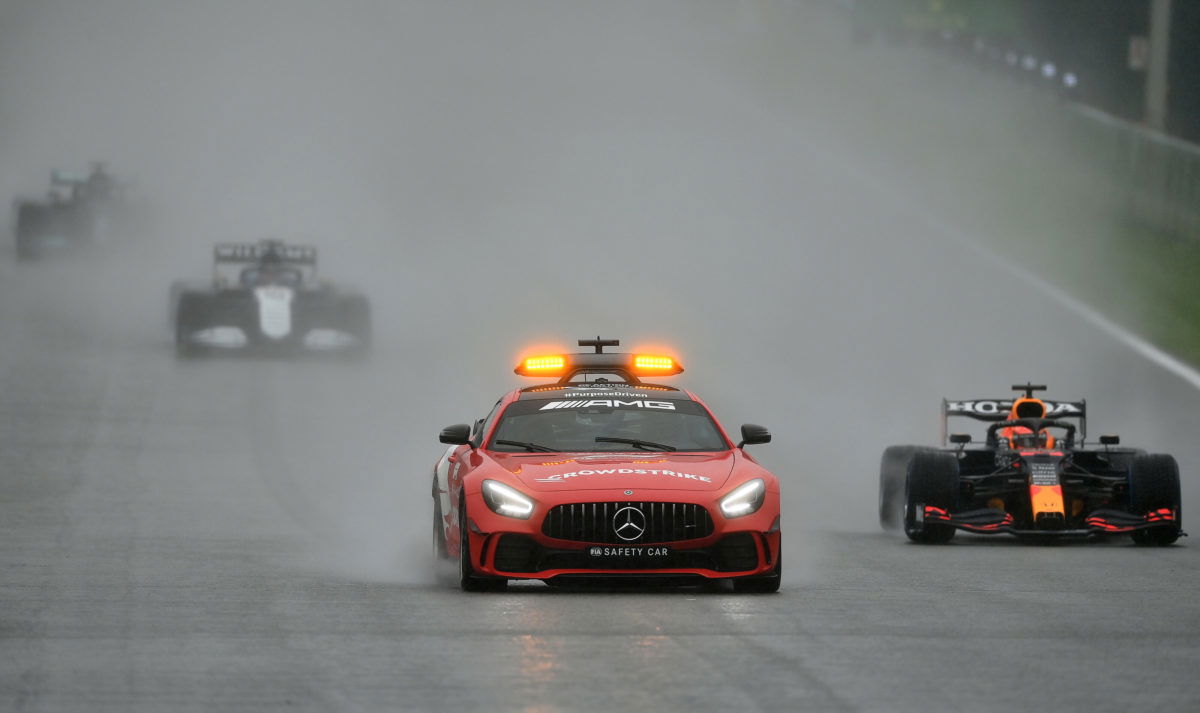

Officials had no way of postponing or further delaying the running of the Formula 1 Belgian Grand Prix.
Sunday’s race was the shortest in F1 history, with the classifications showing just a single lap was completed after heavy rain hammered the Spa-Francorchamps circuit.
In reality, the field completed two full laps behind the Safety Car before the red flag was shown, results then rolled back a lap.
It was an unsavoury end to a race that had initially been delayed for 25-minutes before the cars finally left the grid behind the Safety Car.
However, it was decided soon after that conditions were too bad to commence racing, and so the field was brought into pit lane without the race having officially started.
And there it waited for nearly three hours, during which time it was suggested the race be postponed until Monday, a notion race director Michael Masi has dismissed.
“There is no ability to postpone the race until tomorrow,” the Australian said.
“Obviously from the FIA perspective, and jointly with F1, safety is paramount for drivers, the teams and all of the spectators.
“We gave every available opportunity within the rulebook, and the provisions of the International Sporting Code, to give us the best opportunity for us to complete a race.
“Unfortunately, on this occasion we could not go the full distance that was available, but with the provisions to stop the clock, is what we tried to do to see if we could get ourselves in that weather window of some activity.”
Officials in Belgium exercised a clause within the International Sporting Code to halt the clock which governs the window in which the race must take place.
Typically, a race must be completed within a three-hour period from the originally scheduled race time.
On Sunday, officials paused that clock after two hours while they waited for weather conditions to clear in the hope it might allow for an hour of racing.
It was restarted as cars left the pit lane behind the Safety Car at 18:17.
Conditions had hardly improved, with some suggesting they’d even deteriorated beyond what they were when the race was suspended earlier.
It prompted many, including Lewis Hamilton, to suggest sending the cars out was little more than a ploy to reach the minimum requirements for the race to count towards the world championship.
That is laid out by Article 6.5 of Formula 1’s sporting regulations, with the key phrase being “no points will be awarded if the leader has completed two laps or less.”
Beyond that, anything less than 75 percent race distance receives half points.
“It was to see what the conditions are like,” Masi said of the decision to send cars out for two laps behind the Safety Car, rejecting suggestions it was a means of simply getting a race result.
“We are in constant contact with our official weather providers and there was a window that looked like it was provided there.
“We’ve got the requirement to give a 10-minute warning to everyone so it was like, ‘okay, let’s try and see if we can find that window’.
“A number of the teams said the same thing and they saw that window and could see exactly what we were trying to do to find that weather window.
“Then the weather came in again and got the better of us.”
Max Verstappen was classified the winner from George Russell and Lewis Hamilton, the field for the most part in grid order.
The exception was Sergio Perez, who’d fallen to the back of the train following his pre-race crash, while post-race a time penalty for a rear wing change relegated Lance Stroll to 20th.





















Discussion about this post